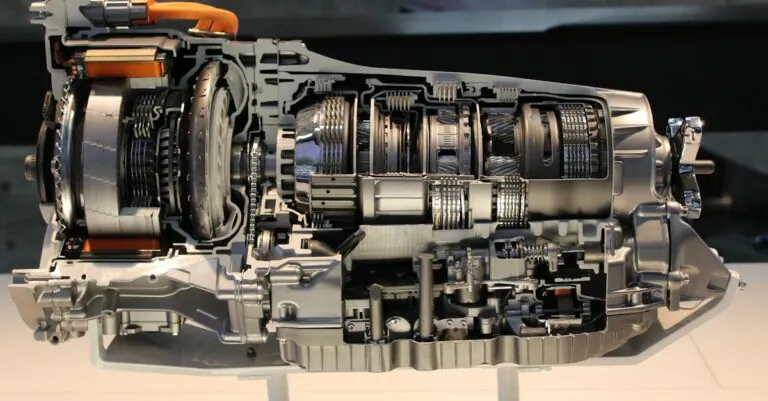Table of Contents
ToggleIn the epic showdown of home entertainment, two contenders face off: DVD and Blu-ray. While DVDs might be the nostalgic favorites of many, Blu-ray brings a high-definition punch that’s hard to ignore. Imagine watching your favorite movie with such clarity that you can count the popcorn kernels in the background. Yes, it’s that good!
Overview of DVD vs Blu-ray Hardware
DVDs utilize a red laser to read and write data. Blu-ray discs, in contrast, employ a blue-violet laser, which allows for higher precision and denser data storage. This difference in laser technology leads to substantial variances in storage capacity. A standard DVD can hold up to 4.7 GB of data, while a single-layer Blu-ray can manage approximately 25 GB.
Hardware components play a crucial role in data reading capabilities. DVD players are generally simpler and less costly, making them widely available. Many households still rely on DVD players for basic playback. On the other hand, Blu-ray players support both Blu-ray discs and DVDs, offering greater versatility. Advanced Blu-ray players often include features such as smart connectivity and enhanced audio outputs.
Video and audio quality differs significantly between the two formats. DVDs deliver standard definition at 480p resolution, but Blu-rays provide high-definition viewing at 1080p and even 4K resolution in some cases. Home theaters benefit from the superior sound quality that Blu-ray hardware offers. Advanced audio codecs like Dolby TrueHD and DTS-HD Master Audio enhance the listening experience significantly.
Many consumers appreciate the additional features found in Blu-ray hardware. Bonus content, interactive menus, and enhanced digital copies available on Blu-ray discs elevate the overall viewing experience. As technology continues to evolve, the shift toward Blu-ray and streaming services indicates a growing trend in the home entertainment market. The hardware choices ultimately reflect user preferences for quality, versatility, and cost-efficiency.
DVD Hardware
DVD hardware provides a straightforward option for playing standard-definition content. Players come in various forms, including standalone devices and integrated options in home theater systems.
Key Features of DVD Hardware
DVD players typically feature simple setups, allowing users to easily connect them to TVs or audio systems. Many include component outputs, composite outputs, and analog audio outputs for versatile connectivity. Notably, various models support additional features like subtitle options and parental controls. Some players even include USB ports for playing digital video files, adding flexibility to media consumption. This level of accessibility caters to a wide audience, maintaining DVDs’ popularity despite newer formats.
Performance Limitations of DVD
Performance limitations of DVD hardware often stem from its lower storage capacity. DVDs only hold up to 4.7 GB, restricting data and video quality compared to Blu-ray options. Standard definition results in a maximum resolution of 480p, which lacks the detail found in higher formats. Additionally, audio tracks may also be of lower quality, impacting overall viewing experiences. Compatibility issues occasionally arise with newer technology. As streaming services gain traction, users begin to expect more advanced features and capabilities than DVD hardware can provide.
Blu-ray Hardware
Blu-ray hardware offers significant advancements in home entertainment technology. It not only plays Blu-ray discs but also supports DVDs, making it versatile for users.
Key Features of Blu-ray Hardware
Blu-ray players often include 4K upscaling, enhancing standard content resolution. Many models feature built-in Wi-Fi for seamless streaming access to platforms like Netflix and Hulu. Users benefit from deeper color and better contrast due to the advanced video encoding technologies employed. Additional features might include support for lossless audio formats such as Dolby TrueHD, ensuring rich sound quality. Interactive menus and bonus content included on Blu-ray discs add extra enjoyment to the viewing experience.
Advantages Over DVD
Higher storage capacity represents a key advantage of Blu-ray. With 25 GB of space per disc, it holds significantly more data than the 4.7 GB of a DVD. Superior audio and video quality is apparent as Blu-ray delivers high-definition at 1080p and even 4K resolution. Users experience enhanced clarity that standard DVDs cannot provide. Furthermore, fast loading times contribute to a more convenient viewing experience. Blu-ray players can access online content, allowing users to enjoy more than just physical media. This flexibility caters to the modern consumer’s diverse entertainment needs.
Comparative Analysis
The comparison of DVD and Blu-ray hardware reveals distinct advantages and limitations for each format. Understanding these differences can enhance the viewing experience.
Picture and Sound Quality
Blu-ray offers superior picture quality, delivering high-definition resolution at 1080p and even resolutions exceeding that with 4K Blu-rays. DVDs, in contrast, provide standard definition at 480p, resulting in less detailed images. Enhanced color depth and contrast in Blu-ray significantly elevate visual clarity. Additionally, Blu-ray supports advanced audio formats like Dolby TrueHD, offering richer sound compared to DVD’s standard audio. The immersive experience from Blu-ray’s superior sound and video quality captures viewer attention more effectively.
Storage Capacity and Formats
Blu-ray discs hold up to 25 GB, while DVDs typically hold only 4.7 GB. This remarkable difference in storage capacity allows Blu-rays to accommodate more extensive and detailed content, including high-definition movies, additional features, and interactive elements. Blu-ray players support DVDs as well, providing users the flexibility to enjoy both formats without the need for multiple devices. As technology evolves, this adaptability becomes increasingly valuable, catering to the diverse preferences of consumers in home entertainment.
The choice between DVD and Blu-ray hardware ultimately hinges on individual preferences and viewing habits. While DVDs maintain a nostalgic charm and simplicity, Blu-ray players deliver a superior experience with high-definition visuals and advanced audio capabilities. The versatility of Blu-ray players supports both formats, making them a more future-proof investment. As streaming continues to evolve, the demand for high-quality content is only expected to grow. Consumers increasingly lean towards Blu-ray for its enhanced features and immersive capabilities, solidifying its place in modern home entertainment.







